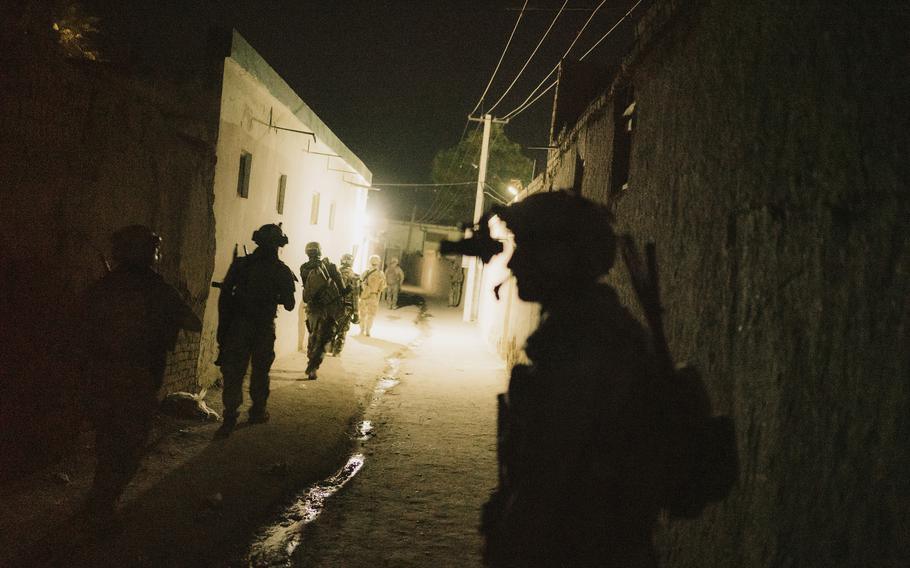Middle East
US escalates airstrikes on Taliban, officials say, as Afghan military loses ground
The Washington Post July 23, 2021

Elite Afghan forces conduct a clearing operation in an area under Taliban control in the northern edge of Kunduz, Afghanistan, on July 15. (Lorenzo Tugnoli/Washington Post)
KABUL, Afghanistan — The United States has launched several airstrikes in support of embattled Afghan forces in recent days, U.S. officials said Friday, an escalation in U.S. involvement in Afghanistan as the Taliban seizes more territory from government forces.
At least four of the strikes were carried out on Wednesday and Thursday, including some in Kandahar, which is the birthplace of the Taliban and increasingly under pressure by Taliban forces, said one U.S. official, who, like another U.S. official, spoke on the condition of anonymity because of the sensitivity of the situation.
The airstrikes were conducted at the request of Afghan forces under attack by the Taliban or to destroy equipment stolen by the militants, including artillery and vehicles, according to the two U.S. officials.
An Afghan military official, also speaking on the condition of anonymity to discuss the situation, said the escalation of U.S. strikes has been “significant” compared to recent months, concentrated in the northern province of Kunduz and in Kandahar.
The Taliban has made rapid territorial gains, including border crossings vital for trade, as the U.S. drawdown nears completion. Gen. Mark Milley, the chairman of the Joint Chiefs of Staff, said Wednesday that militants had seized about half of the country’s 419 district centers. He told lawmakers last month the Taliban held just 81 district centers.
“Strategic momentum appears to be sort of with the Taliban,” Milley said.
For weeks, the Afghan military has bitterly fought to maintain control of provincial capitals after losing huge swaths of the country’s rural territory, often with little or no resistance. Militants have besieged the capitals by seizing districts nearby, choking off key roads in a bid to deny Afghan troops freedom of movement.
No provincial capitals have fallen, but Milley said the Taliban’s strategy has forced Afghan security forces to abandon some districts and reconsolidate to defend populated cities.
The U.S. withdrawal is about 95 percent complete, the Pentagon said this week. About 650 U.S. service members will remain in the country to defend the U.S. Embassy and international airport in Kabul.
Marine Gen. Kenneth “Frank” McKenzie, the head of U.S. Central Command who assumed responsibility for U.S. operations in Afghanistan earlier this month, has said there is now a “high standard” for authorizing airstrikes, which now must originate from aircraft flying from outside the country.
The process has become more complicated after the withdrawal, he said, because intelligence capabilities have been reduced, along with the ability of U.S. troops on the ground to guide aircraft and munitions toward targets while assessing risk to nearby civilians.
Taliban spokesperson Zabiullah Mujahid said the airstrikes violated terms of the ongoing peace accord discussions and “would have negative consequences.”
The United States will not support Afghan forces with airstrikes after the complete withdrawal at the end of August, McKenzie said, reserving the capability only for militants planning terrorist attacks on the U.S. homeland or against allies.
Pentagon spokesman John Kirby declined to discuss specifics about recent airstrikes in a news briefing Thursday.